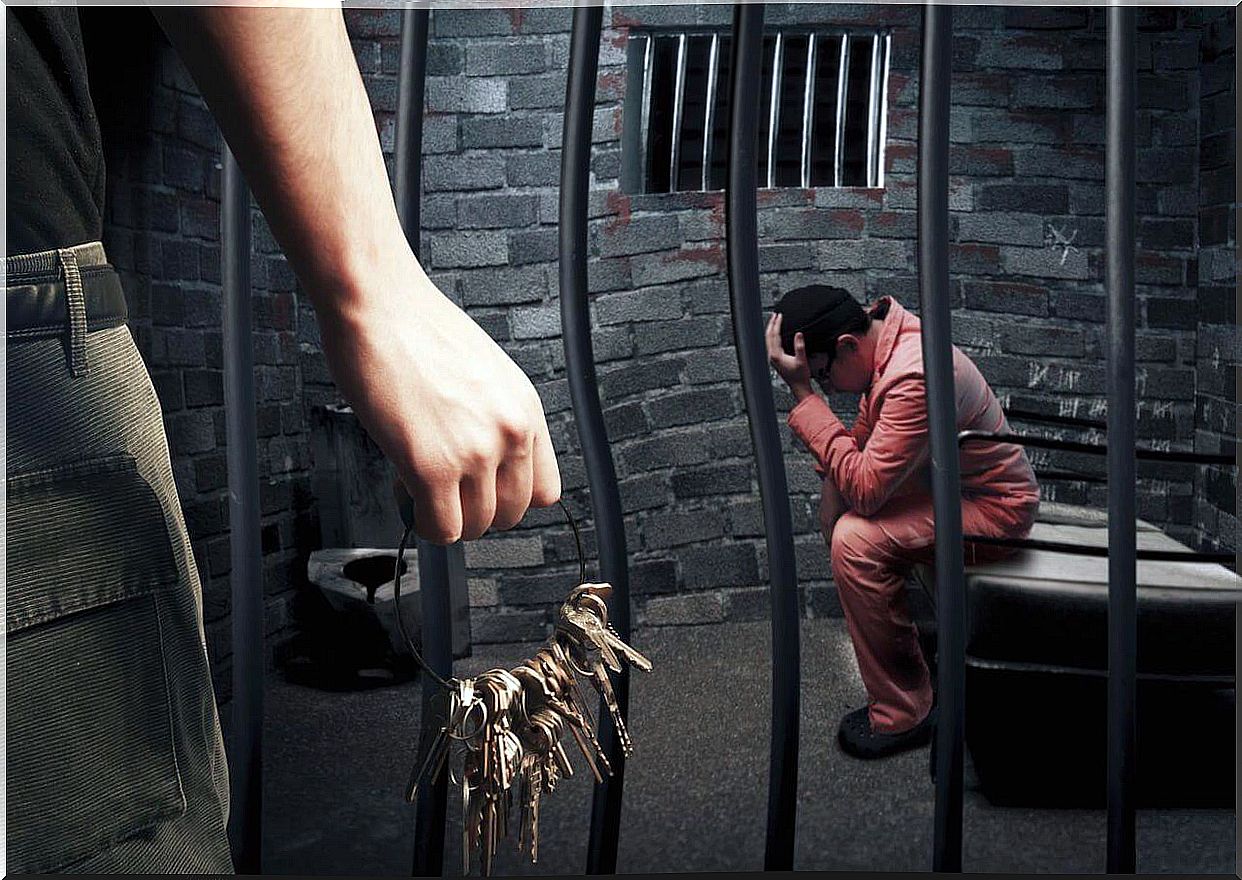The Fall Of A Myth: Stanford Prison

If we think of social psychology, the Stanford prison experiment may come to mind. This experiment conducted by Philip Zimbardo in 1971 has become the most famous in the field. Who else and who least has heard of him or seen any of the films that have been made, which has been driven, in part, by his great work as a disseminator.
Zimbardo intended to study the behavior of human beings under the influence of situational variables and answer a series of questions such as: what makes a good person act evil? Are circumstances capable of transforming a “good person” into a “bad person” and even cruel?
The Stanford Prison Experiment
In the experiment, volunteers were required to “simulate a prison.” Those selected were divided into “prisoners” and “guards”, so that each one had to act according to the assigned role.
Surprisingly, both the prisoners and the guards seemed to adopt roles very quickly, naturally giving way to behaviors that they would never have performed in their everyday surroundings. The prisoners were submissive, obedient, depressed, passive and dependent, while the guards, on the contrary, were sadistic, evil, authoritarian and inflexible; abusing their power and status.
This situation had unimaginable consequences, the guards imposed new rules, carried out acts of humiliation and humiliation, verbal violence, and even a great repertoire of punishments, generally abusing the submission of the prisoners whenever they had the opportunity to do so.
This whole situation began to have psychological repercussions on the prisoners through the presence of different emotional disorders, some of them being withdrawn from the experiment and replaced. Finally the experiment was terminated after six days, far from the planned two weeks.

Results analysis
The main conclusion of this experiment was that roles greatly influence behavior (and, by extension, thoughts and emotions). Thus, what often gives way to kind or evil behaviors are the circumstances and not the people. In this way, the internalization of roles and external variables can lead us to evil, which would partly explain extreme behaviors or catastrophic situations such as Nazism.
In the words of Zimbardo: “We were able to observe how the prison dehumanizes people, transforming them into objects and inoculating them with a feeling of hopelessness. Regarding the guards, we realized how normal people can transform themselves from the good Dr. Jekyll to the evil Mr. Hyde ”. So far everything seems logical and it is what they have always told us, but this experiment should not perhaps be called or even an experiment.
Interpretation from identity
One of the bases of science is replicability. Any experiment, if replicated under the same conditions, would have to generate the same conclusions. But what if they don’t replicate? Obviously, there would be a problem. In this case, it would be necessary to look for the causes that the results are different. However, the variability of human behaviors further complicates this task.
In the case of Stanford prison, replicating the study has ethical limitations. However, two researchers, Haslam and Reicher, carried out a partial replication of the experiment with the assistance of the BBC, which televised scenes from the study on a reality show called The Experiment .
The results and conclusions were very different from those of Zimbardo, they found that the cause was not the roles but the group identity. While Zimbardo suggested that tyranny was an inherent consequence of groups and power, Haslam and Reicher proposed that powerlessness and failure as a group were what led to tyranny.

Criticism of the Stanford prison
This latest study and other Stanford prison issues that have come to light have exposed the most famous experiment in social psychology. Let’s see some of them:
- Treatment of prisoners: the experiment ended due to some practices that occurred such as the sadism of the “guards” and the traumas of the “prisoners”. Although this was not expected to happen, the experiment had to be suspended as soon as the first signs appeared. Every experiment must respect certain rules, such as the protection of the health of the people who participate in it.
- Confidence in anecdotal evidence: every scientific experiment must have control over the variables that may influence the results. In this case, the data that exist are the experimenters’ observations, which are subjective and based on anecdotes. Zimbardo even got involved and participated in the experiment, influencing the participants.
- Training of the guards: the behaviors of the “guards” are supposed to be spontaneous, that is, the sadistic techniques they practiced arose from them. However, it has subsequently been known that the experimenters were the ones who encouraged them to carry them out.
- Implicit demands: One of the “guards”, with theater experience, commented that his plan was to force something to happen. This was reinforced by the investigators and by the passivity of his colleagues. Thus, in experiments, participants are likely to do what they think the researchers want them to do. Therefore, participants often act stereotyped.
- Interpretation of results: two participants dropped out of the experiment before it was aborted. It was blamed that they had had a crisis inside the prison. However, the participants stated that they faked the crises to get them out since the only way out was for medical or psychiatric help. In addition, one of them declared that he wanted to drop out to study because he had exams and in prison they would not let him study.
- Small, non-representative sample: all participants came from similar socio-economic backgrounds and were male from the United States. This homogeneity in the participants, together with the fact that they were few, means that the results cannot be generalized to other populations.
Although these criticisms may seem like mere anecdotes after so long, their importance is such that many teachers have stopped teaching this pseudo-experiment to psychology students. Science is not perfect and improves from the identification and correction of errors. Likewise, science needs rigor to generate consistent knowledge. Therefore, it is necessary to implement good practices and criticize when they are not followed.









